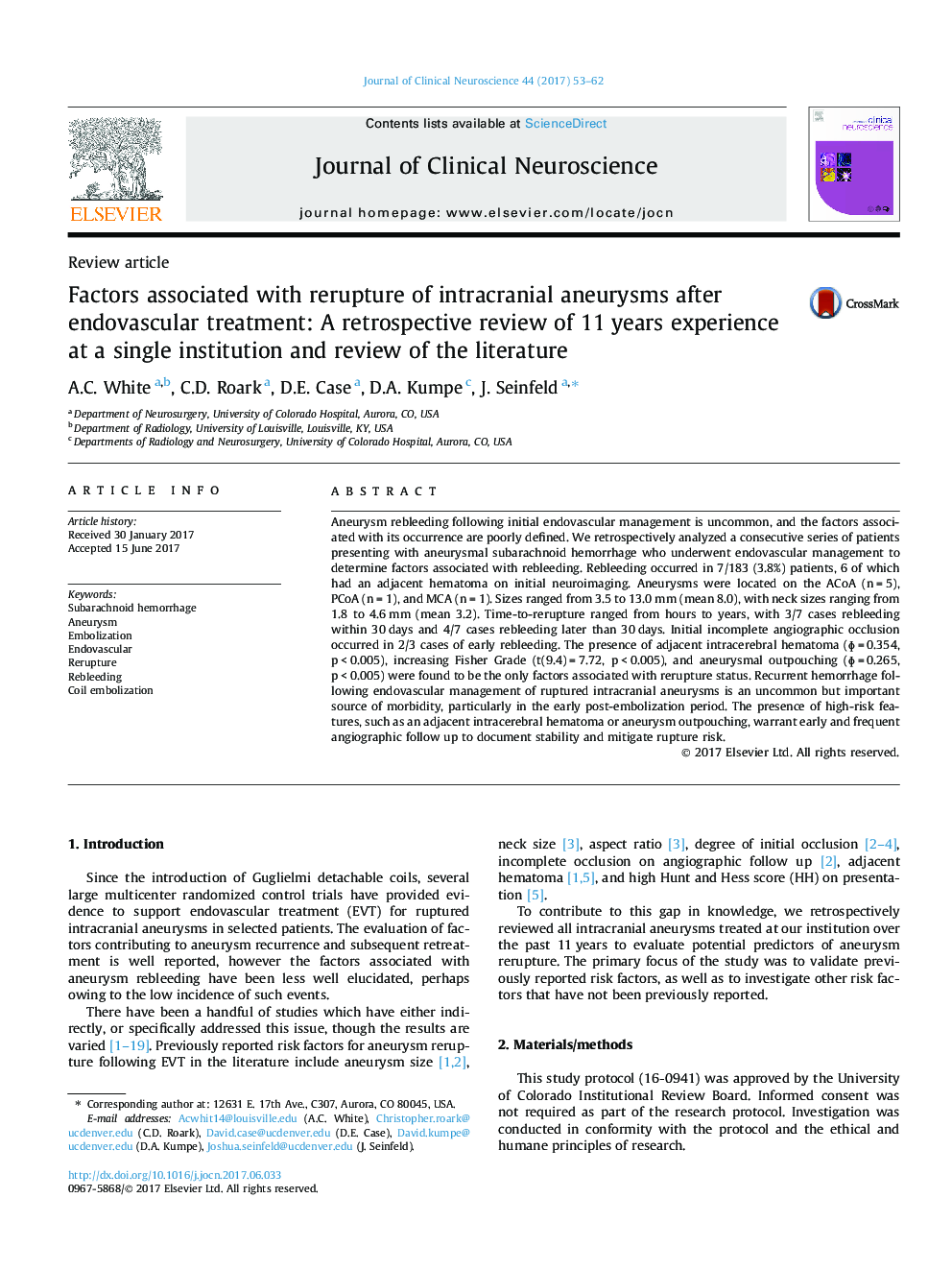| کد مقاله | کد نشریه | سال انتشار | مقاله انگلیسی | نسخه تمام متن |
|---|---|---|---|---|
| 5629506 | 1580272 | 2017 | 10 صفحه PDF | دانلود رایگان |

- Intracranial aneurysm rerupture is uncommon, but can lead to significant morbidity.
- Initial incomplete occlusion is seen more frequently in early rerupture.
- Adjacent hematoma or aneurysm outpouching are high risk features for rebleeding.
- Treated aneurysms with high risk features warrant early and frequent angiography.
Aneurysm rebleeding following initial endovascular management is uncommon, and the factors associated with its occurrence are poorly defined. We retrospectively analyzed a consecutive series of patients presenting with aneurysmal subarachnoid hemorrhage who underwent endovascular management to determine factors associated with rebleeding. Rebleeding occurred in 7/183 (3.8%) patients, 6 of which had an adjacent hematoma on initial neuroimaging. Aneurysms were located on the ACoA (n = 5), PCoA (n = 1), and MCA (n = 1). Sizes ranged from 3.5 to 13.0 mm (mean 8.0), with neck sizes ranging from 1.8 to 4.6 mm (mean 3.2). Time-to-rerupture ranged from hours to years, with 3/7 cases rebleeding within 30 days and 4/7 cases rebleeding later than 30 days. Initial incomplete angiographic occlusion occurred in 2/3 cases of early rebleeding. The presence of adjacent intracerebral hematoma (ɸ = 0.354, p < 0.005), increasing Fisher Grade (t(9.4) = 7.72, p < 0.005), and aneurysmal outpouching (ɸ = 0.265, p < 0.005) were found to be the only factors associated with rerupture status. Recurrent hemorrhage following endovascular management of ruptured intracranial aneurysms is an uncommon but important source of morbidity, particularly in the early post-embolization period. The presence of high-risk features, such as an adjacent intracerebral hematoma or aneurysm outpouching, warrant early and frequent angiographic follow up to document stability and mitigate rupture risk.
Journal: Journal of Clinical Neuroscience - Volume 44, October 2017, Pages 53-62